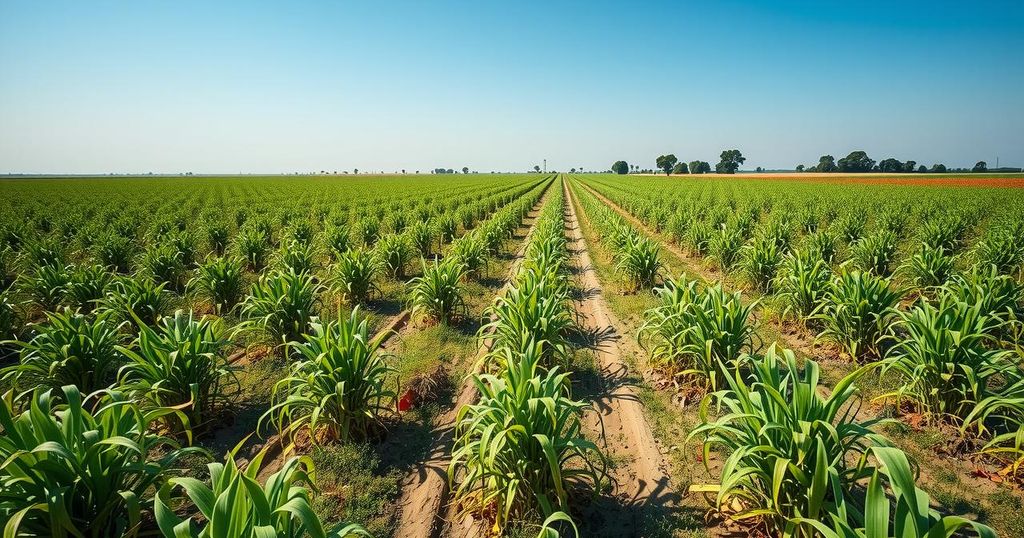Brazil’s sugarcane crop is threatened by ongoing dry weather, exacerbating effects from last year’s drought. Mixed forecasts exist, with Datagro projecting lower production at 612 million tonnes, while Hedgepoint estimates a safer 630 million tonnes based on recent rainfall. Soil conditions remain a concern across regions, and overall yield will be influenced by April’s rainfall.
Recent developments have raised concerns regarding Brazil’s sugarcane crop for the 2025/26 harvest, set to commence in April. The January and February drought has compounded existing problems from the previous year, with serious impacts anticipated in the Center-South’s sugarcane-growing areas. Predictions from various analysts remain mixed, with some expecting an increase in sugarcane crushing, while others foresee a notable decline in production.
At a recent event, the consultancy Datagro projected a slight decrease in production to 612 million tonnes, while Hedgepoint offered a more optimistic forecast of 630 million tonnes due to better soil moisture conditions. However, an adverse weather forecast for March to May could hinder output. Conversely, the trading firm Sucden predicted a more pessimistic estimate, suggesting production could fall between 590 million and 600 million tonnes.
Producers’ concerns are substantial, with estimates suggesting a potential 15% decline in crop output. Challenges such as poor sprouting and slow growth persist across plantations, regardless of whether they were affected by last year’s fires. Reports from sugarcane suppliers indicate failures in ratoon crop regeneration, necessitating replanting efforts in drought-impacted fields.
The Jaú region in São Paulo is particularly suffering from insufficient rainfall, with productivity expected to drop by 25%. As conditions vary across regions, some, like Piracicaba and Pirassununga, report lesser impacts. Nonetheless, significant disparities in rainfall have been noted: Ribeirão Preto and Araçatuba experienced 26.5% and 43.1% deficits, respectively, during February, while southern Minas Gerais and Goiás reported more than 70% deficits.
Despite high soil water storage levels, the overall moisture retention has diminished compared to the previous year. Datagro forecasts a decline in productivity during the first third of the harvest season due to unfavorable growing conditions, while the second third may yield stable results, contingent on forthcoming rainfall in April and May.
Plínio Nastari, president of Datagro, emphasizes that upcoming rainfall will be vital to determine overall output for this crucial harvest period.
The current dry weather poses a significant threat to Brazil’s sugarcane crop for the 2025/26 harvest, raising concerns among producers and analysts alike. With predictions ranging from slight production declines to serious drops, the impact of inadequate rainfall in key growing regions is undeniable. The state of moisture retention, alongside soil conditions, will dictate productivity levels as the harvest season progresses. Ultimately, the forthcoming April rainfall will be critical in shaping the successful yield of sugarcane. In summary, while some firms remain hopeful, the prevailing conditions have left many in the industry cautious about the upcoming harvest and its challenges.
Original Source: valorinternational.globo.com




